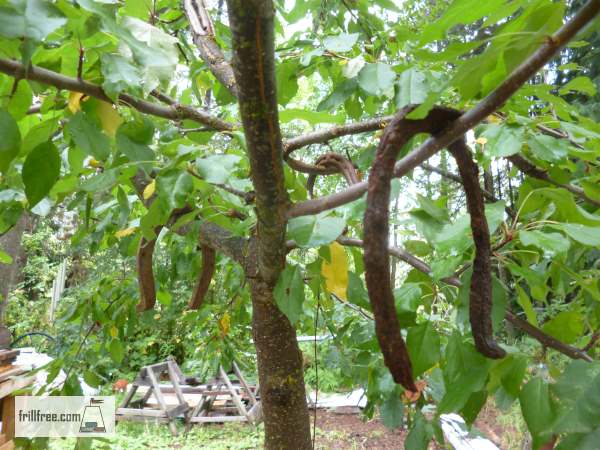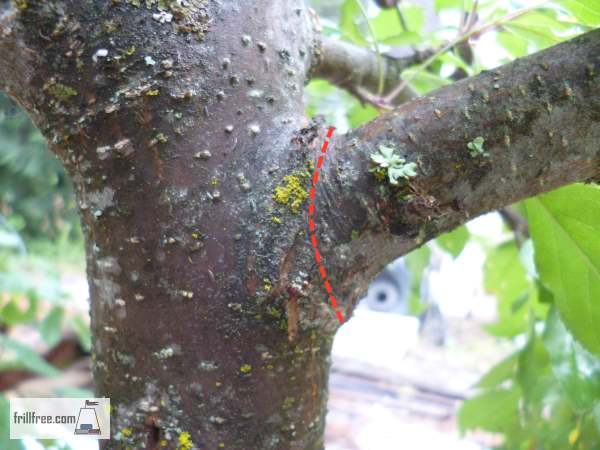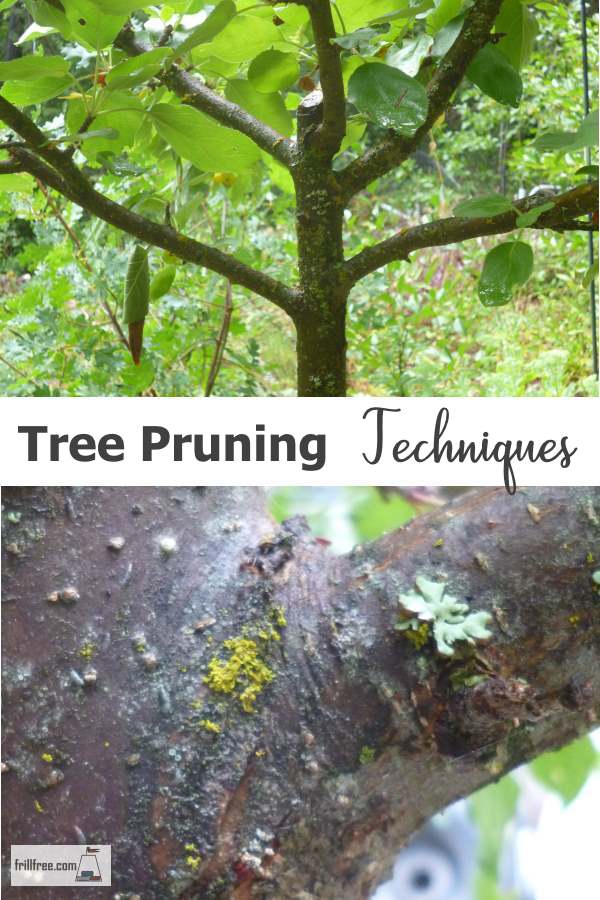- Homesteading
- How to Grow Organic Fruit
- Tree Pruning Techniques
Tree Pruning Techniques
For Healthy and Productive Fruit Trees
Pruning fruit trees doesn't have to be fraught with anxiety; use these methods of pruning to keep your trees happy and producing for years to come.
Luckily, once your tree has been pruned into its scaffold, there is
little for you to do, except yearly trimming to make the growth go where
you want it.
The scaffold of the tree depends on having a vision of the growth and where it will sprout from.
In infancy, or a few years of growth past the grafting stage, the growth can be left to do its thing. Once the tree has a few years of growth on it, then the shaping can begin.
 Shaping a fruit tree with weights
Shaping a fruit tree with weightsIdeally, you will start with a young tree and shape it from an early age.
All is not lost if you get to it later on, but the smaller the branches that need to be cut off, the smaller the wounds that the tree has to heal.
Don't let the branches of your apple or pear tree get too big if you plan to cut them off - it's best to cut them small because of another important reason too - the larger the branch, the heavier it is, and the more the risk of it falling off and tearing the bark before you've finished cutting it.
To prevent this, undercut the bark at the bottom of the cutting line.
 Where to make the cut on a big branch
Where to make the cut on a big branchIt's important to learn where to make the cuts, especially if you're
just starting out. The collar, or where the branch joins to the trunk,
is where the cut will heal from. The collar looks like a sock all
wrinkled up; prune above the sock and leave that behind.
Cutting off too much of the branch will mean a bigger area for the bark
to grow over, and leaving a stub of a branch gives pathogens an easier
entry way into the tree.
It used to be common practice to use tree paint, or to glob on wax or
other materials in the theory that this would protect the cut area.
All this does is seal in bacteria, so it's no longer advised.
If you're unsure what you're doing, one way to start is to tie pieces of colored yarn around where you think you'll cut.
Leave these for a while, and look at the tree often, anticipating what will happen. Will that branch grow in the right direction? Is that the best branch to cut, or leave?
It might look funny at first, and birds could see the yarn as possible nest building material and steal them.
Clean sharp tools are essential to pruning success.
Fruit Tree Tip;
Because fruit is formed on horizontal branches only, I use horseshoes and other metal items to weigh the branches down.
This encourages the branch to form flower buds, which are then where fruit will form.
Do this with caution; you don't want to break the branch!
There are many ways to prune a tree - fruit trees like to be pruned in the spring, but there's nothing to prevent pruning them at other times to get rid of crossing or defective branches.
Other systems include trellising, which is a good method for supporting apple trees that are grafted, and have weak growth.
For more ornamental uses, the pagoda pruning method works to provide a shady spot to park a lawn chair.
















